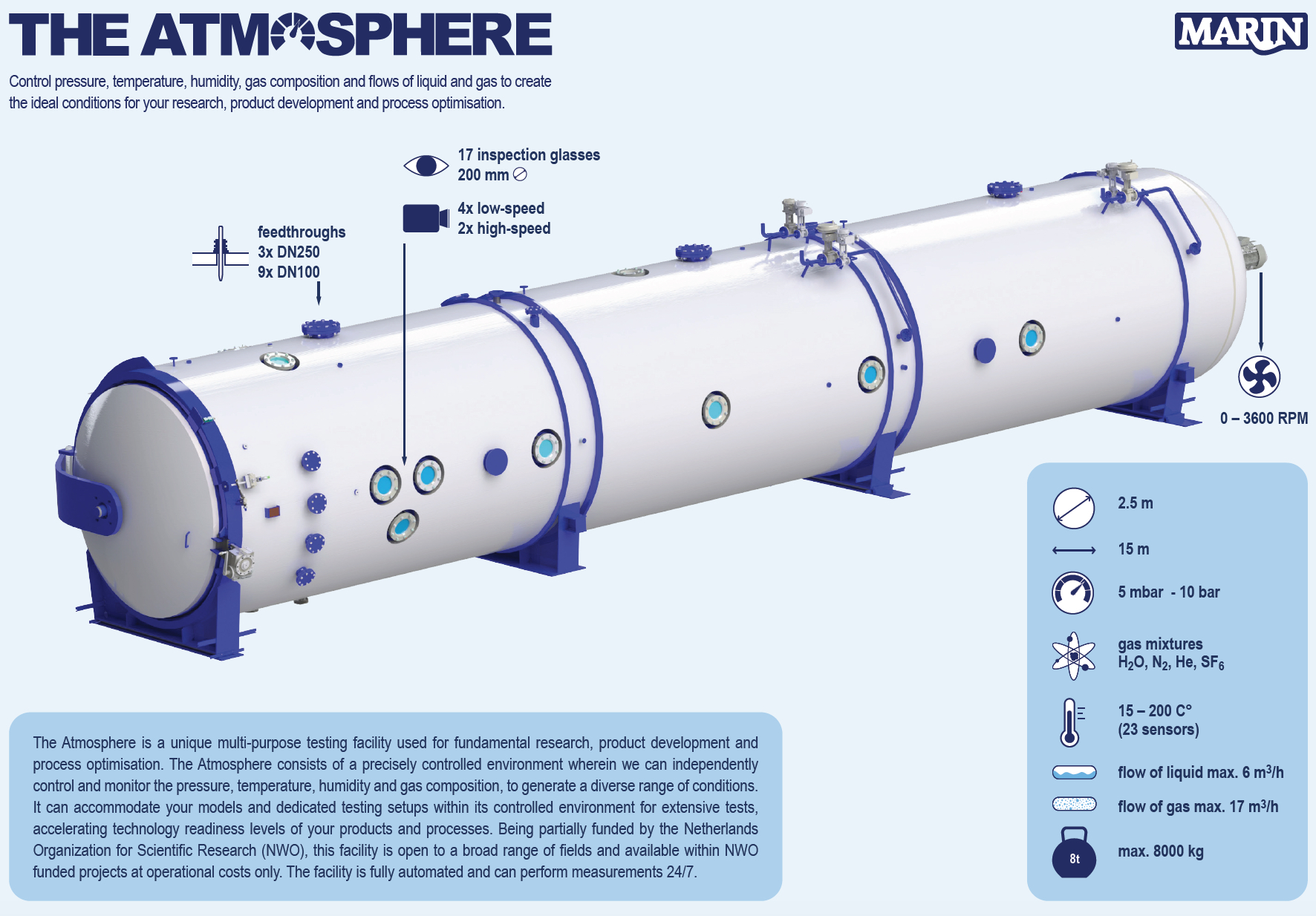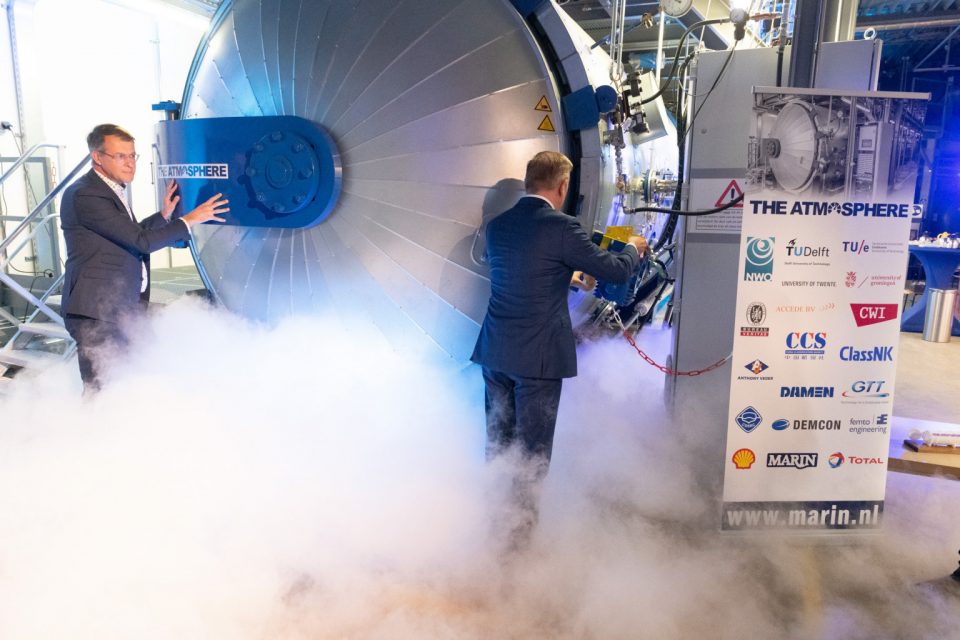MARIN’s latest research facility “The Atmosphere” has officially been opened. In this 15-metre long autoclave with a diameter of 2.5 metres variables like temperature, pressure, gas composition, humidity and liquids can be controlled. Its first project focused on sloshing within ships’ cryogenic fuel tanks.
The Atmosphere gives researchers a new dimension in simulation of circumstances and research in the challenges of today and tomorrow.
Controlling and monitoring 24/7
Liquids and gases can circulate through the autoclave and their temperature can be controlled independently within a range of 15°C to 200°C. In the autoclave, the pressure can be reduced to 5 mbar absolute, and increased to 10 bar absolute, with an accuracy of ± 2.5 mbar. Gas compositions of nitrogen, helium, sulphur hexafluoride or steam/water vapour can be adjusted with an accuracy of ± 1 volume per cent. The 76.5-m3 autoclave is suitable for setups up to 8000 kg that can be connected to gas and liquid connections.
The autoclave is equipped with 17 sight glasses with a diameter of 200 mm, multiple flanges for instrumentation and feed-throughs for shaft drives that can be connected to equipment in the autoclave. 23 sensors measure the temperature in the liquid and gas. In addition, the inside of the autoclave is observed with 2 high-speed cameras (up to 100,000 fps) and 4 low-speed cameras (up to 200 fps). The liquid level in the setups can be measured and controlled to an accuracy of 0.1 mm. The facility is fully automated and can take measurements 24/7.

SLING
The first achievement of The Atmosphere is SLING. SLING generates the knowledge that enables optimal design and operation of cryogenic fuel tanks. The international shipping industry wants to emit 50 per cent less C02 by 2050 and focuses on the use of natural gas, hydrogen, et cetera. At sea, these fuels must be extremely cooled and stored in liquid form. This requires special fuel tanks to withstand the waves of the sloshing “boiling” fuel in the tank. Scientists are working with the industry to unravel the complex physics of those wave hits.
Eric Dehouck, Deputy CEO of GTT explains: ‘The biggest design challenge is withstanding the impact due to sloshing. The design loads are determined by sloshing tests on a 1 to 40 scale. Measurements on board an LNG carrier showed that the results of small scale model tests are conservative. But we wanted more than that: we wanted an optimal balance between mechanical strength and thermal efficiency of the fuel tank for every project. The only way is to improve our physical understanding of sloshing cryogenic liquids. This is the purpose of SLING.’
SLING is a Perspective programme funded by NWO, in the domain Applied and Engineering Sciences and the business community. The SLING consortium consists of four top Dutch universities, companies within shipbuilding and LNG shipping, engineering companies and research institutes. The Atmosphere was designed and built within SLING.
Multifunctional test facility
Eppo Bruins, member of the House of Representatives for the ChristenUnie, officially opened the facility last week and says: ‘Knowledge is the only motor for the future. Only by multidisciplinary cooperation in theory and practice are we able to do the much needed research.’
‘Fundamental understanding in what happens to this earth is essential for the maritime industry,’ adds Bas Buchner, CEO of MARIN.
Hannes Bogaert, founder of The Atmosphere at MARIN: ‘Temperature rise, greenhouse gas, particulate matter, drought, sea level rise, aerosols… the climate in which we live is changing rapidly, without us seeming to have any control over it. The Atmosphere is about regaining control by researching sustainable solutions and offers unique opportunities for this.’
‘The Atmosphere gives us more understanding of multiphase dynamics of liquids, variability of impact loads and relevance of impact loads on structural response,’ says Hans Hopman, Professor of Delft University of Technology.
Herry Nijhuis, director of the NWO Domain Applied and Engineering Sciences (AES) concludes that ‘The Atmosphere is a unique facility for the Dutch research community. And thanks to the contribution from NWO, it is open to all NWO partners at operational costs. It is very important that such facilities come to the Netherlands, and the researchers who work with them.’
Picture (top): Eppo Bruins closes the door of The Atmosphere.








